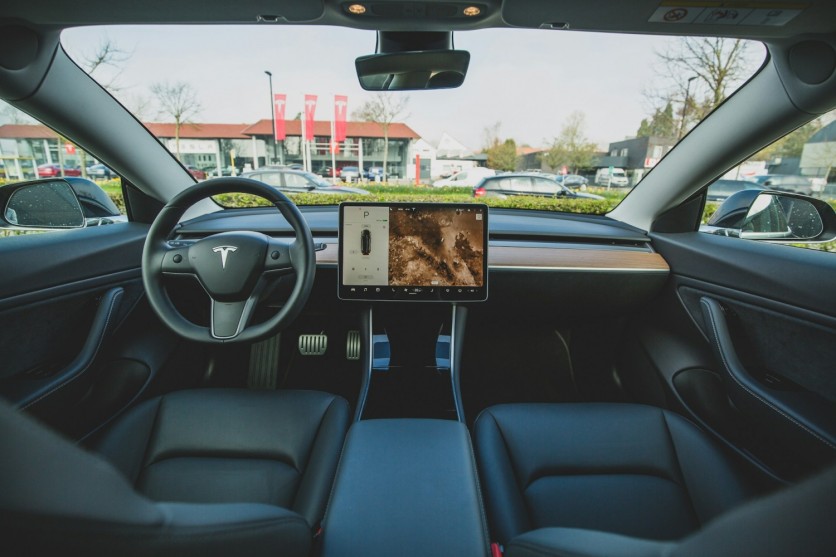Long after this patent came out, Tesla robotaxi trials were thought to be possible after Elon Musk visited Beijing.
Now, it's clear that the automaker wants to revolutionize the ride-hailing industry with its new patent, which hints at an advanced automatic sanitation system. According to the report, it was filed on February 21, 2023.
The patent offers intriguing insights into the potential features of Tesla's forthcoming Robotaxi fleet, expected to be composed of Tesla Cybercabs.
Advanced Sensor Technology for Enhanced Safety

When you take a closer look at Figure 5, we can see that the patent showcases a vehicle outline reminiscent of the Cybercab design teased in previous Tesla materials.
In addition to methods using the HVAC system, this patent presents additional sanitation methods:
— SETI Park (@seti_park) June 30, 2024
Figures 7A-7C show methods for thermal management and sanitation of touchscreens and other contact surfaces inside the vehicle. By using active heating elements and passive… pic.twitter.com/C4DH1Dbjtu
The patent abstract indicates that the automatic sanitation system is intended for vehicles "shared among multiple persons," pointing directly to the Robotaxi application.
This technology can provide the following benefits to Tesla's robotaxi service, scheduled to be unveiled on 8/8:
— SETI Park (@seti_park) June 30, 2024
✅ Passenger safety: Automatically sanitizing the vehicle interior between each ride reduces the risk of pathogen transmission.
✅ Efficient operation: Maintaining…
The Tesla Robotaxi patent outlines a sophisticated sensor system designed to detect temperature, humidity, and the presence of pathogens within the vehicle.
"The sanitation system then obtains and generates a sanitation routine based at least in part on the sensor data. Based on the sanitation routine, the sanitation system causes a component associated with the enclosed space to adjust the current environmental condition toward a target environmental condition, where the sanitation routine specifies the component and the target environmental condition," states the patent abstract.
As Teslarati reports, the patent is here to stay to maintain the cleanliness and safety of the vehicle for the passengers, addressing a critical concern in the shared mobility sector.
Implications for Tesla's Robotaxi Service
Patent researcher SETI Park highlights the significant impact Tesla's automatic sanitation system could have on the robotaxi service.
Park notes that this technology will enhance vehicle sharing convenience and improve the overall user experience, thereby increasing the value of Tesla vehicles.
As Park wrote on X, this patent could be Tesla's Robotax Services' key technology that will provide convenience to the riders, paving the way for their improved user experience.
Anticipation for the Cybercab Launch
Tesla plans to unveil its Robotaxi fleet vehicle, the Cybercab, on Aug. 8. Inspired by the Cybertruck, the Cybercab is expected to be a fully autonomous vehicle without a steering wheel. This design contrasts with the previously anticipated Model 2 (or Model Q), initially slated for the Robotaxi fleet, which was expected to include a steering wheel.
In May, the automaker released a teaser video on X showcasing the Cybercab's design, highlighting its steering wheel-free configuration.
Tesla Should First Solve Issues With its Self-Driving Tech
While the introduction of the automatic sanitation system is impressive, the key challenge remains achieving fully autonomous driving capabilities. Electrek emphasizes that solving self-driving technology is crucial for the success of Tesla's robotaxi fleet.
Electrek's take on the matter reflects a cautious optimism: "This is cool, but obviously, it only makes sense if you have solved self-driving, which Tesla has yet to do. That seems to be the hard part. I'm not saying you shouldn't think about all the other problems to solve once you have a fleet of self-driving Robotaxi. You should. But solving self-driving seems to be the main hurdle."
Despite the impressive progress with Tesla's Full Self-Driving (FSD) version 12, there are still uncertainties about achieving a true driverless system. The journey towards fully autonomous vehicles continues to be a challenging and complex endeavor.
Until now, Tesla has yet to notify regulations regarding the robotaxi venture.

ⓒ 2026 TECHTIMES.com All rights reserved. Do not reproduce without permission.




